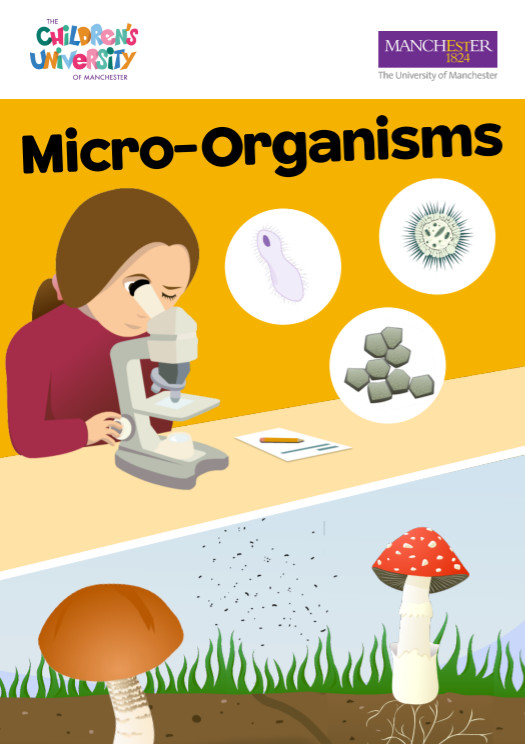Introduction
Welcome to Micro-organisms

Hello, I’m Dr David Moore and I am a mycologist at the University of Manchester.
So, what is a mycologist?
Well, let me explain, a mycologist is someone who has studied, and therefore knows quite a lot about fungus. The fungus Kingdom includes mushrooms and yeast and much, much more. As a mycologist, I know the common (Penny Bun) and Latin (Boletus edulis) names of many species of fungi, but more than 100,000 species exist, so I learn more every day! I know how they are classified; what they look like; how they reproduce, feed and grow; how they are used to make medicines (like penicillin and statins) and food (beer, wine, cheese, edible mushrooms, Quorn) and also their dangers such as poisoning and infection. As you can see, mycology is an extremely fascinating and important subject.
Why do we need fungi?
We depend on fungi every day of our lives. From breakfast to supper we rely on fungi to provide our food, our treats, our consumer products and our medicines. Fungi are not just mushrooms and moulds. Fungi digest the grass eaten by cows (and all other herbivores) and by doing so indirectly provide the milk for our breakfast and the steak for dinner. Fungi make plant roots work and by doing so provide the corn for our cornflakes, oats for our porridge, potatoes, lettuce, cabbages, cotton, paper, timber, and every other plant product we find so essential.
How do fungi relate to micro-organisms?
Fungi can be classified as micro-organisms along with Bacteria, Viruses, Algae and Protozoa and we will be looking at these in more detail in this section of the Children’s University.
